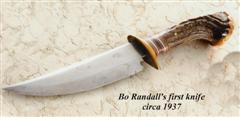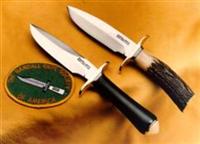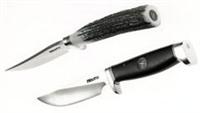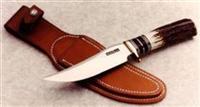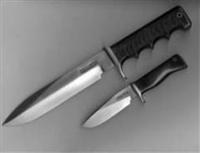Yes,...I believe I've seen several Randall's with black spacers,...just joking a bit in keeping with the spirit of "da man".

Ok,...this is a Model 26 I received about a year ago. The reduced hilt sort of reminded me of a glorified steak knife, and it arrived in a pouch Randall sheath without the usual strap.
The stag is a "meaty" example offering very good grip, even when wet because of the many raised bumps in the stag. (but not so high as to be uncomfortable)
Here's how it looked before some changes were made:

The choil is somewhat less than on my other Model 26's, but not as much as is shown in the post above. The stag handle is basically a Model 25 but without any leather spacers.
I've been wanting a thinner bladed version of this for better control in woodcraft/bushcraft duties,....as well as better slicing in food prep. The 3/16" spine puts the edge at a steeper angle than I prefer when cutting into wood and making feathersticks, and the abrupt termination of the grind doesn't help when slicing hard vegetables.
The actual edge was also much too delicate for woodworking,....as it had very thin and short secondary bevel. This had a great edge originally for cleaning game, which it was designed for I suppose, but I'd worry about rolling or chipping an edge for bushcraft duties.

This example also had a fairly deep stamping, which would be necessary to thin the blade and have a full stamp remaining. I dulled the edge before working on it, since I was planning on putting on a thicker edge anyway. This made it safer to work with without taping up the edge,...which would get in the way for the project.
I didn't know how thin I could go, but started with a 1/2" drum sander, 60 grit,....and worked JUST the stamped side until I got close. Then went to 120 and later 240 grit,....then hand sanding with a wooden block and 600 grit to 1500 grit,.....and using a jewelers polishing rag by hand imparted a near mirror finish.
This allowed me to use my dial calipers to make sure I was grinding parallel to the untouched side. I also took a measurement of the thickness before I started. I took another thickness measurement to see how much thickness I had removed from just the one side. This gave me a number to remove from the other side to even it all up.
In the end I ended up with a noticeably thinner blade, that smoothly tappers from .141" (9/64") at the Randall stamp area to about .10" nearing the tip. (stock was .1875" , aka 3/16", or 12/64" with smoother tapering toward the tip.
The blade is about 25% thinner, about all I could do and be sure of the full Randall stamp remaining. The shallower stamp should prove easier to clean out and dry, especially on a carbon blade like this.
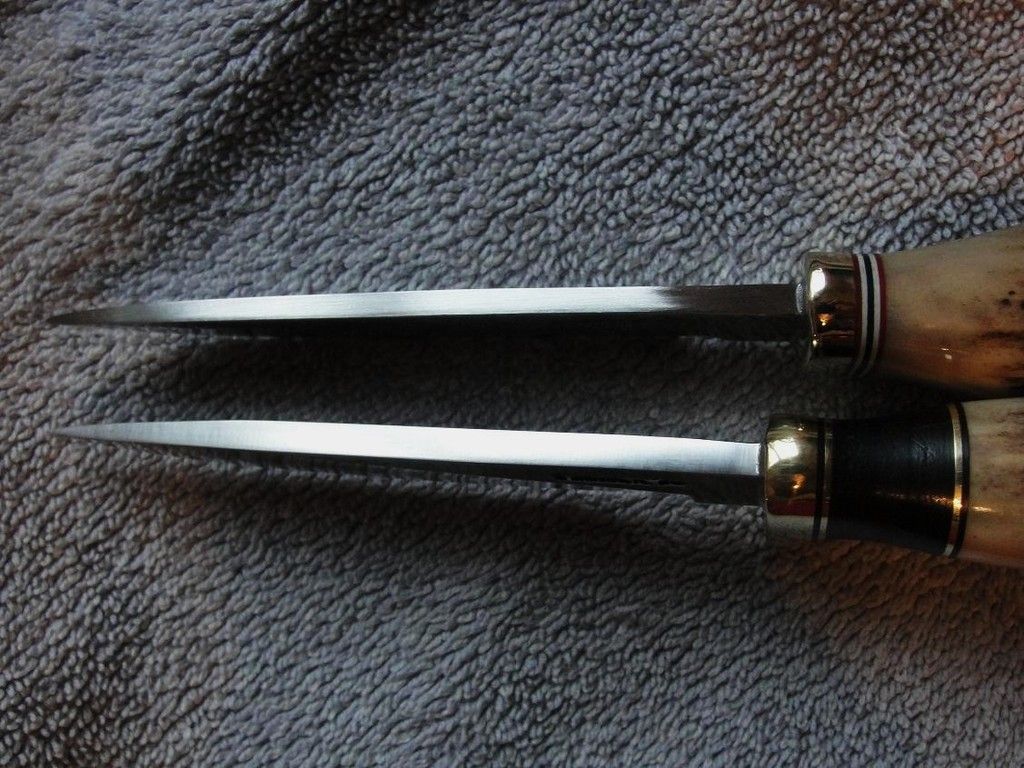
I also rounded up the "peaked" shape of the reduced hilt,...as it was uncomfortable when I chocked up to that area. Now I can grip right up over the choil area to make use of all the cutting edge. The noticeably shorter choil on the worked on Model 26 is also seen....

A few more....

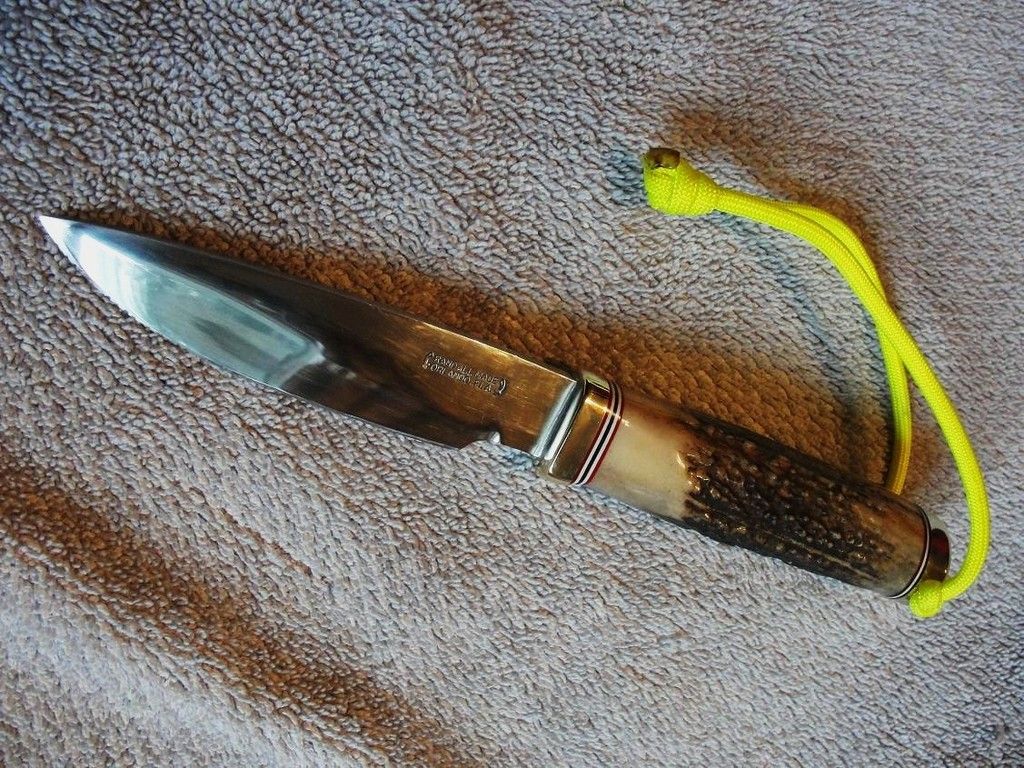
The stamp is full,...but of course not as deep:

Thong hole added:

You can see just how "meaty" this handle is, compared to my other Model 26 with 25 handle. Notice the raised bumps for gripping advantage, especially when wet. With no guard and working near the edge, that is "helpful".


I made use of a tighter fitting Billy Watson sheath which covers more of the stag and is much tighter fit. This is my most practical EDC, although the Model 1-7 Kit knife I posted recently was been traveling with me of late. This is a much lighter rig, using 5/8" litago leather straps.

I took the sheath apart, and brought more of the upper section down and sewed in a smaller upper slot to fit the 5/8" strap. It stays put when wearing,....the Chicago Screws have a raised top and bottom, retaining the sheath on the channel. There is a full size belt loop further down out of sight in this picture that will allow "Hi-Ride" belt carry. I prefer the harness, however. The lower belt loop area could fit a removable leather fire steel holder when I get around to it.




